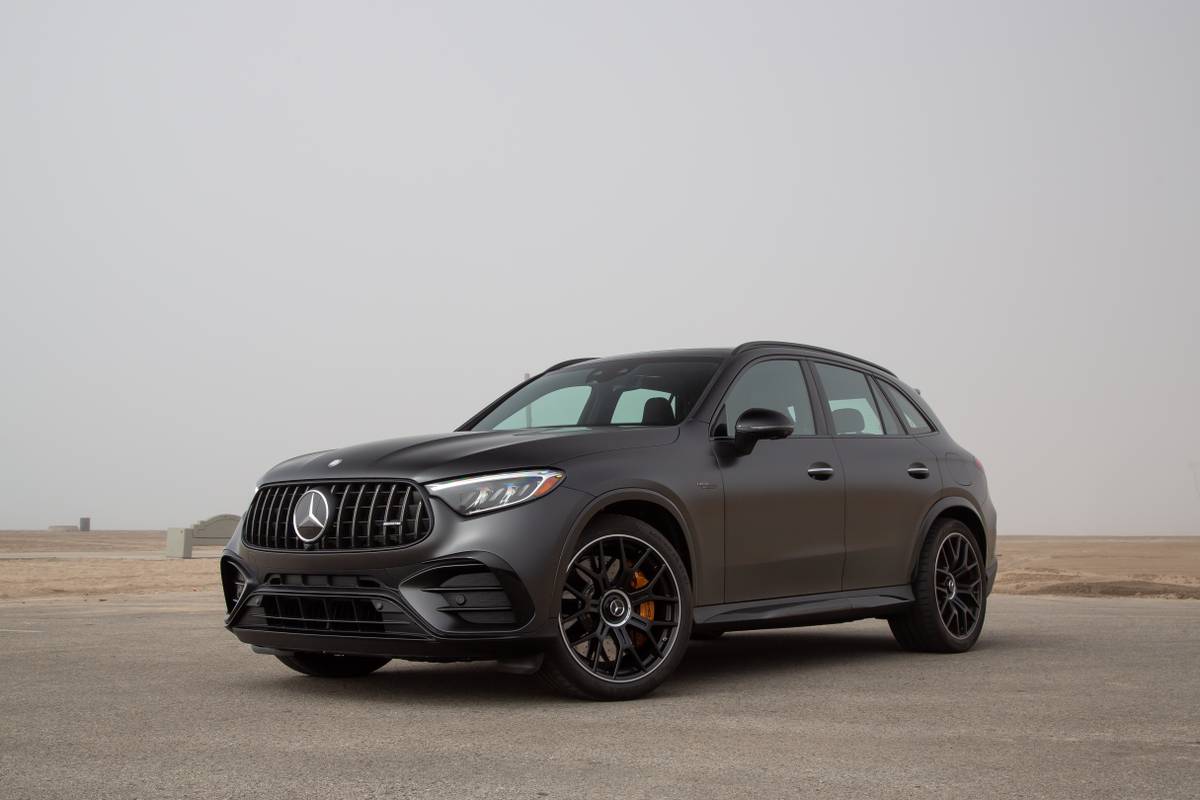Cincinnati.com's view
I’ve frequently tipped you off that a car can be a great bargain when it’s getting toward the end of its life cycle – when dealers and factories are eager to unload the old before bringing in the new at model changeover time, the savings can be significant.
This could be applied to Mitsubishi’s flagship Diamante, due to be superseded soon by the all-new version unveiled last January at the North American International Auto Show in Detroit. Edmunds, the trove of car-buying information, found that Diamantes are going for almost $1,500 off sticker currently. And that doesn’t include a $2,000 rebate available in many areas – check it out at www.edmunds.com.
Unless price is your sole criterion, hold up. The world has passed the current-generation Diamante by; one can only hope the 2002 will be much better. The 2001 is closer on the carbon scale to lump of coal than the diamond its name implies. Three years ago, when it debuted in its current form, the Diamante seemed more competitive than it does now. But while Mitsubishi marked time, such foes as Toyota (Avalon), Lexus (ES300), Nissan (Maxima), and Volkswagen (Passat) were raising the midsize, near-luxury bar, leaving Mitsu to do the limbo.
Vehicle dynamics aside, on paper, the Di looks mighty good. Both the number of creature comforts and the mechanicals certainly put it a notch above the mundane motorcar. It comes in two series, ES and LS. I was lent the spiffier LS, and the critic-coddling PR department could find no options with which to gild it. It comes standard with such delicious extras as an anti-theft immobilizer system, 4-wheel discs, climate control, HomeLink remote, 210-watt Infinity AM/FM/CD entertainment system with 8 speakers, adjustable driver’s lumbar support and power moonroof, in addition to all the ordinary niceties found in upper-class cars. Conspicuously missing from the list is any kind of side air bag, but that’s coming.
The leather upholstery is luscious, buttery-soft and lavishly applied. The pseudo-wood trim was laid on perhaps a bit too extravagantly. The instruments are among the most beautiful I’ve seen. They’re electroluminescent, highly visible even in daytime, and the markings in white seem to float above a ground of black. Size and positioning are nearly ideal, although they are but 4 in number.
The audio system uses an in-glass diversity antenna system plus a power mast. Overall sound quality was quite good, and the tuner sensitivity was extraordinary – stations came in without a hint of breakup far outside the usual range; nice to see someone has gotten the “diversity” system, which makes the most of two separate signal paths, to realize its potential. Pity the radio readouts are smallish, of the LCD type. They were nearly impossible to discern in daylight and not all that easy to fathom at night, placed a bit awkwardly as they were. Ditto for the climate control readouts, which were not only hard to see, but puzzlingl y iconic.
When I first set off in the Diamante, I was surprised to find the engine stumbled a bit when cold (ambient temps in 80s) – thought fuel injection had solved that problem. But it warmed quickly and behaved itself after that. The engine is a 24-valve single-overhead-cam 3.5-liter V-6. It’s rated at 205 hp (@5,000 rpm) and 231 foot-pounds of torque (@4,000).
The Diamante in LS trim weighs 3,549 pounds, so I thought it should easily break the 8-second 0-60 barrier, but it struggled to get into the low 8s except when I wound up the revs a bit against the brakes (not recommended for torque converter longevity). The engine seemed a bit peaky, and second gear was far enough away from first to allow it to fall off the power peak when making the upshift. Drag racing aside, the powerplant seemed quite up to the usual range of chores. Overdrive was worth about 30 mph for each 1,000 engine rpm, allowing for economical and quiet cruising, and forced downshifts to third for pa ng or hill-climbing were effected quickly.
The transmission is supposedly of the “adaptive” kind, which takes its clues on how long to hold a gear from driver input. It did seem to respond after a fashion to discordant driving styles, but in just ordinary going, it stumbled and hesitated more than one would like.
The shift lever is mounted on the console, and overdrive is disengaged by the crude expedient of pulling the lever from D to 3. Even so, third was so high that it didn’t completely banish the running-away feeling one got in D, and it certainly didn’t provide much compression braking on hills.
The EPA estimates mileage at 18 mpg city, 25 highway. I did 21.2, on the specified regular, in what I’d call hard service.
The Diamante is front-wheel-drive. When the full force of 3.5 liters hits those front wheels, there’s a noticeable amount of squirm as the two wheels fight over an equitable division of power. The LS comes with traction control, which cuts the power when the driver’s demands exceed the realities of the tire/road junction. The car also has what Mitsubishi, in a fit of nomenclatural fancy, calls “trace control.” This is what others call a stability system. It uses sensors to detect when the driver’s steering input exceeds what the tires can handle and decreases power accordingly. A more primitive form already exists in the tires’ tendency to whine and squeal when even modest loads are applied.
The Diamante has a profound self-centering bias, which practically jerks the steering wheel to an on-center position even when it’s not appropriate. I found it quite disconcerting and, coupled with the heavy dose of torque steer, it discouraged any attempts at high-performance driving. I noticed a fair amount of tire and suspension noise at freeway speeds, but that was because wind noise was unusually low. The Diamante has an extraordinarily low coefficient of drag (0.28).
Ride quality was only fair, for this class, at lower speeds, too much harshness slipping by the suspension bits. It felt considerably better at lofty velocities, gliding over even poorly-serviced pavement. The brakes functioned well, even in a succession of high-rate panic stops, the antilock efficient and unobtrusive.
Neither the federal government nor the insurance industry has current crash data on the Diamante. Consumer Reports, while admitting it has insufficient data about reliability issues, largely agrees with my observations (they like the transmission better) and predicts the car will show far worse than average depreciation.
Final assembly point for the Diamante is Adelaide, Australia. In all, 52 percent of the content is from Japan and 41 percent from Australia. The Down-Under work force is not known for its attention to detail, as was evident in some minor details on the tester.
Base price on the test car was $28,407. Total, with freight, was $28,927. Figure you can knock that down a few thou sand, and you do have a car, based on content alone, that seems a bargain. But you’d be well advised to wait for the next generation or to sample the competitive offerings.
Latest news



